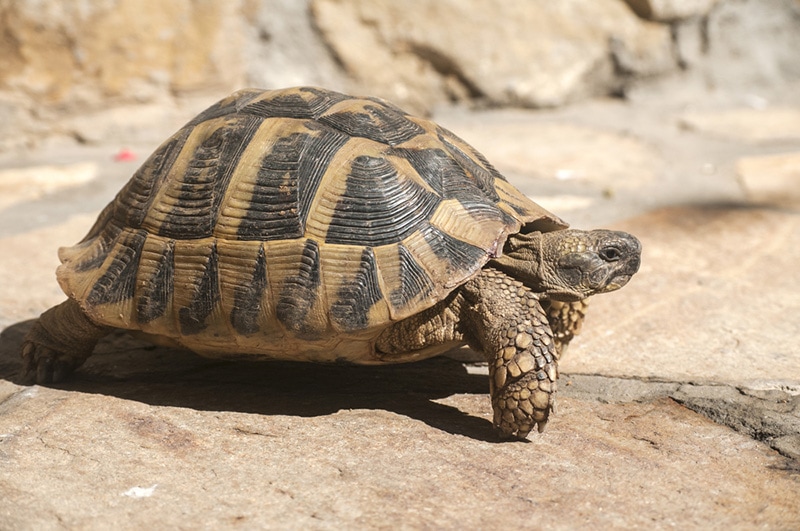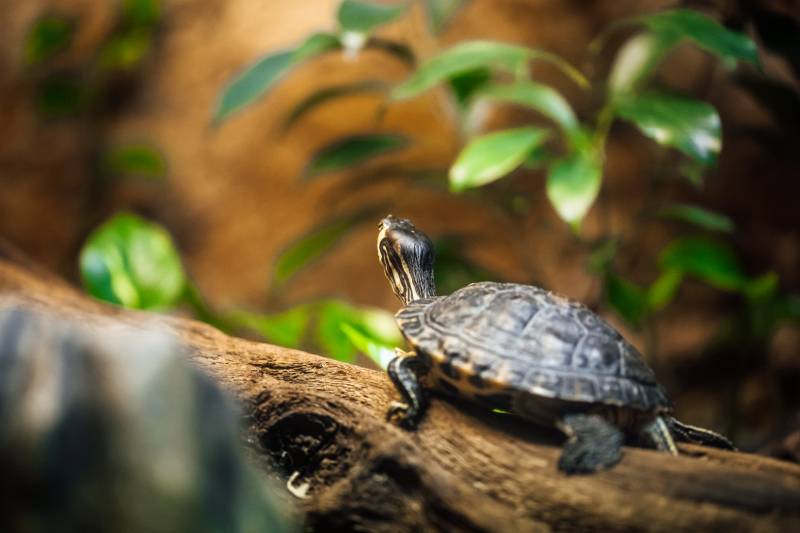Do Tortoises & Turtles Fart? Vet-Approved Tips, Facts, & FAQ
Updated on
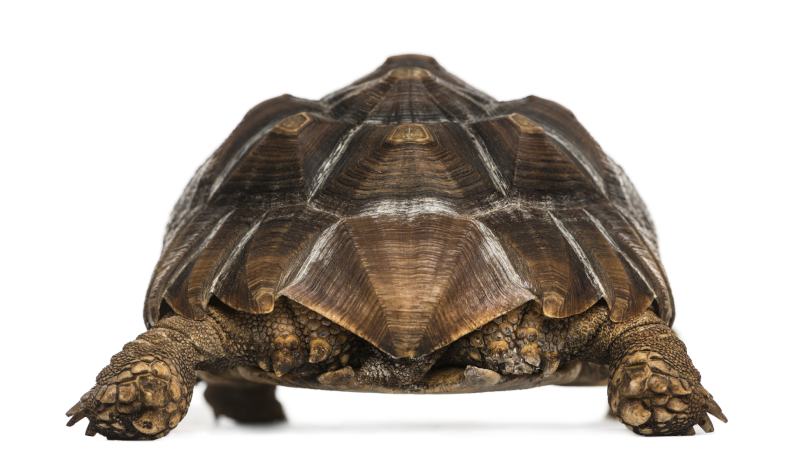
If you live with a dog, you’re probably used to the occasional loud, smelly fumes that they emit after a particularly hearty meal. Some pups are even afraid of their own farts! But what about our more discreet and peaceful scaled companions, turtles and tortoises? Do they also emit flatulence? Not only do these reptiles fart, but the act is also crucial to their survival.
Keep reading as we dig deeper into this stinky truth!
What Are Farts?
Farts are the result of the accumulation of gas in the body, which must be released from the digestive system through the rectum. This natural bodily function also occurs when you swallow air while eating.
When we eat, the food passes through the digestive system, where it is broken down by enzymes and bacteria. During this process, gases are produced as byproducts. These can accumulate in the gastrointestinal tract, leading to a buildup of pressure. Eventually, the body releases this built-up gas through the rectum, resulting in a fart.
A study published in the 1990s found that humans produce around 700 ml of farts per day and that they are mostly made up of hydrogen, nitrogen, and carbon dioxide. Up to a quarter of flatulence is simply oxygen and nitrogen from swallowed air. The other three-quarters are made up of carbon dioxide, hydrogen, and methane produced by gut flora—those are the ones that stink!
The composition and smell of farts can vary depending on several factors, including diet. Certain foods, especially those high in insoluble fiber or fructose, can produce more gas during digestion. For example, beans, cabbage, broccoli, and soft drinks are known to cause increased gas, as can dairy products for lactose-intolerant people. Certain bacteria in the digestive system also contribute to the production of gas, including the pungent-smelling sulfur compounds responsible for that rotten egg smell!

What Makes Turtles and Tortoises Fart?
Just like with humans, the food ingested by these reptiles is broken down in their digestive tract, which can lead to a buildup of gas. However, tortoises and turtles possess an adaptation unique to amphibians, reptiles, birds, sharks, and platypuses. The cloaca; a single opening through which they excrete both solid and liquid waste, as well as lay eggs or reproduce.
Turtles evacuate the gases accumulated in their digestive system through their cloaca.
Are Turtles Farts Smelly and Noisy?
Yes, they can be quite smelly, but that mostly depends on your turtle’s diet. Turtle farting can also be noisy, but you will more easily be able to tell that your turtle has just farted if small bubbles come out of their bottom when they’re in the water.
What If a Turtle Can’t Fart?
Not being able to pass gas can be a deadly problem, especially for sea turtles as it prevents them from being able to dive for food. This is what happened in 2020 to a century-old sea turtle named Rhea,1 which was found floating on the coast of Australia’s Northern Territory by fishermen. She was unable to dive and find food because her stomach was too full of gas. According to the veterinarian in charge, this usually indicates an obstruction of some type, which can be life threatening if left untreated.
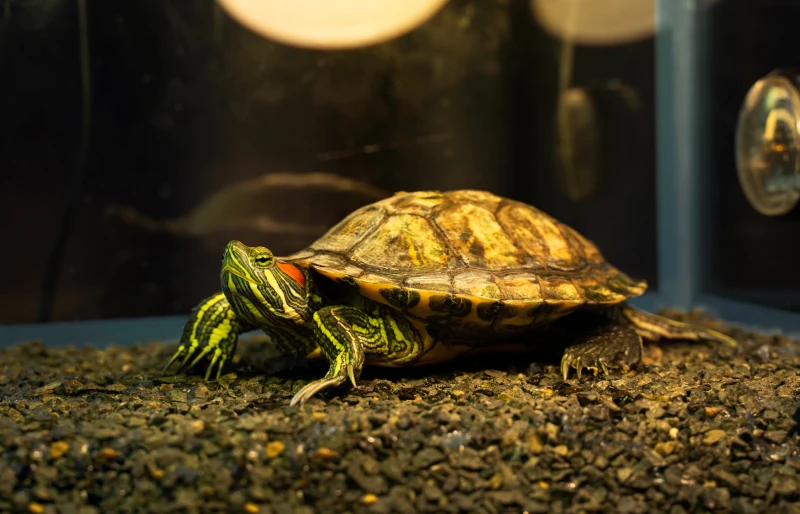
Do All Animals Fart?
Sloths are probably the only mammals that don’t fart. Digestion in these animals is as slow as their movement, but that means the buildup of gas in their bodies could be fatal! For this reason, sloths have developed a special mechanism to reabsorb gases.
Octopuses don’t release gas either. Indeed, they don’t have the intestinal flora capable of producing gases. Perhaps surprisingly, birds don’t fart either. Their intestines are also devoid of the bacteria responsible for producing flatulence, and they digest food incredibly quickly. That said, birds do have the anatomy to fart, which suggests they could do so if necessary.
Tips for Keeping Your Turtle and Tortoise Healthy—and Limiting Their Farts!
It’s impossible to completely prevent your turtle from releasing gas, and you shouldn’t try, anyway, because flatulence is part of the life of (almost) all animals. But there are a few things that you can do to help your turtle’s digestive process and limit whiffy farts:
- Avoid feeding your turtles foods that promote excess gas, such as cruciferous vegetables like broccoli, cauliflower, green beans, brussels sprouts, and cabbage.
- Do not overfeed your turtle. As a general rule, you can allow your pet reptile to eat as much as they want, but only for 2 minutes. After that, remove any leftovers.
- Beware of foods high in oxalates, which can cause bladder stones in some species. Certain vegetables are particularly high in oxalates, including spinach, chard, and beets.
- If your turtle seems bloated, you should seek advice from your veterinarian, as this could be a sign of something more serious than just excess gas.
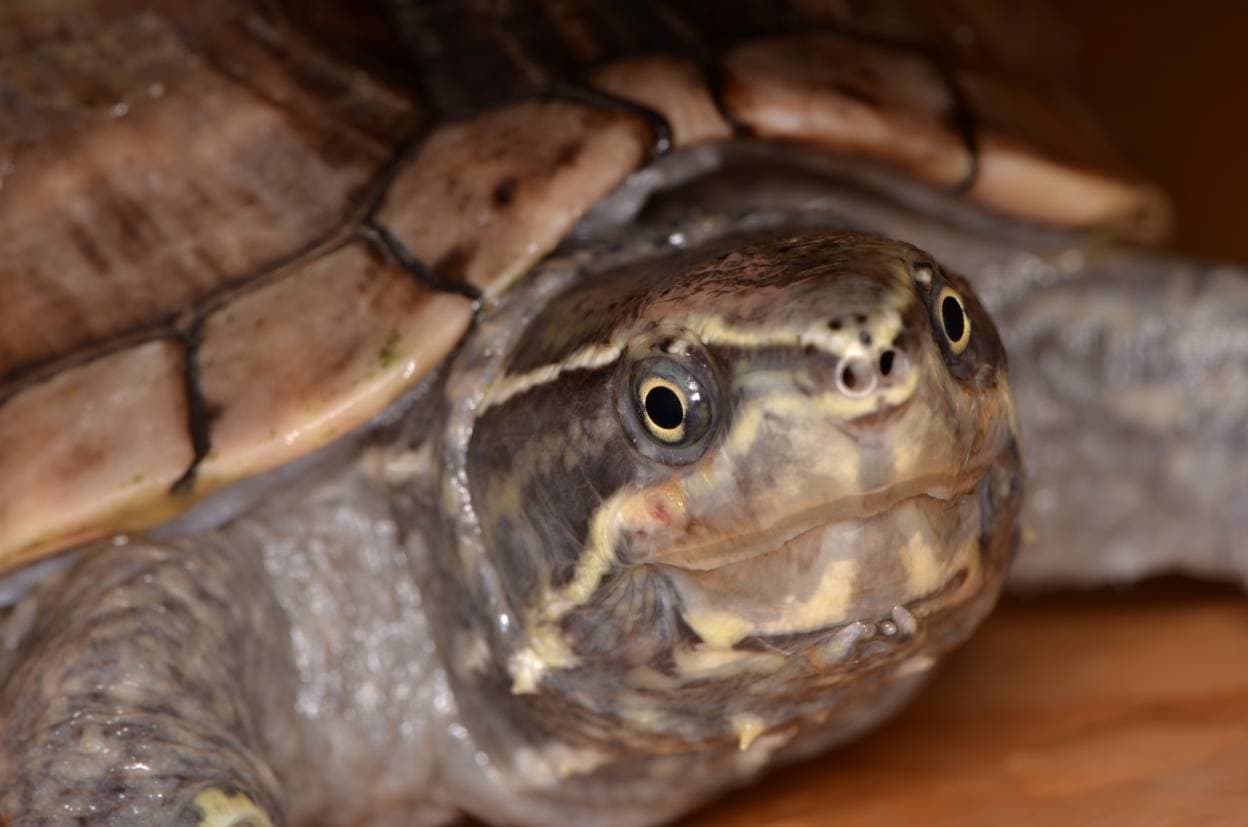
Fun Fact: Some Turtles Species Breathe Through Their Butts
The cloaca isn’t just for dropping farts! Indeed, some North American species, such as painted turtles, hibernate to survive harsh winters. They must immerse themselves in freezing water, lower their body temperature, and slow down their metabolism by 95%.
However, they still need oxygen to survive, which poses a major problem when they’re at the bottom of a frozen lake! Fortunately, they have an ability known as cloacal respiration. Small blood vessels located around the cloaca absorb oxygen from the water. Via this ingenious process, these hibernating reptiles can get the oxygen that they need to survive.
That’s what we call making the most of your unique anatomy!
Final Thoughts
Now you know the stinky truth: Turtles and tortoises do engage in that common bodily function, farting! In fact, these cute reptiles must emit flatulence to release the air trapped in their bodies. This helps relieve pressure in the gastrointestinal tract and maintain a healthy gas balance in the digestive system.
However, in some cases, excessive or persistent flatulence may indicate underlying digestive issues or dietary factors that warrant further attention, meaning it might be time for a trip to your vet.
Featured Image Credit: Eric Isselee, Shutterstock




